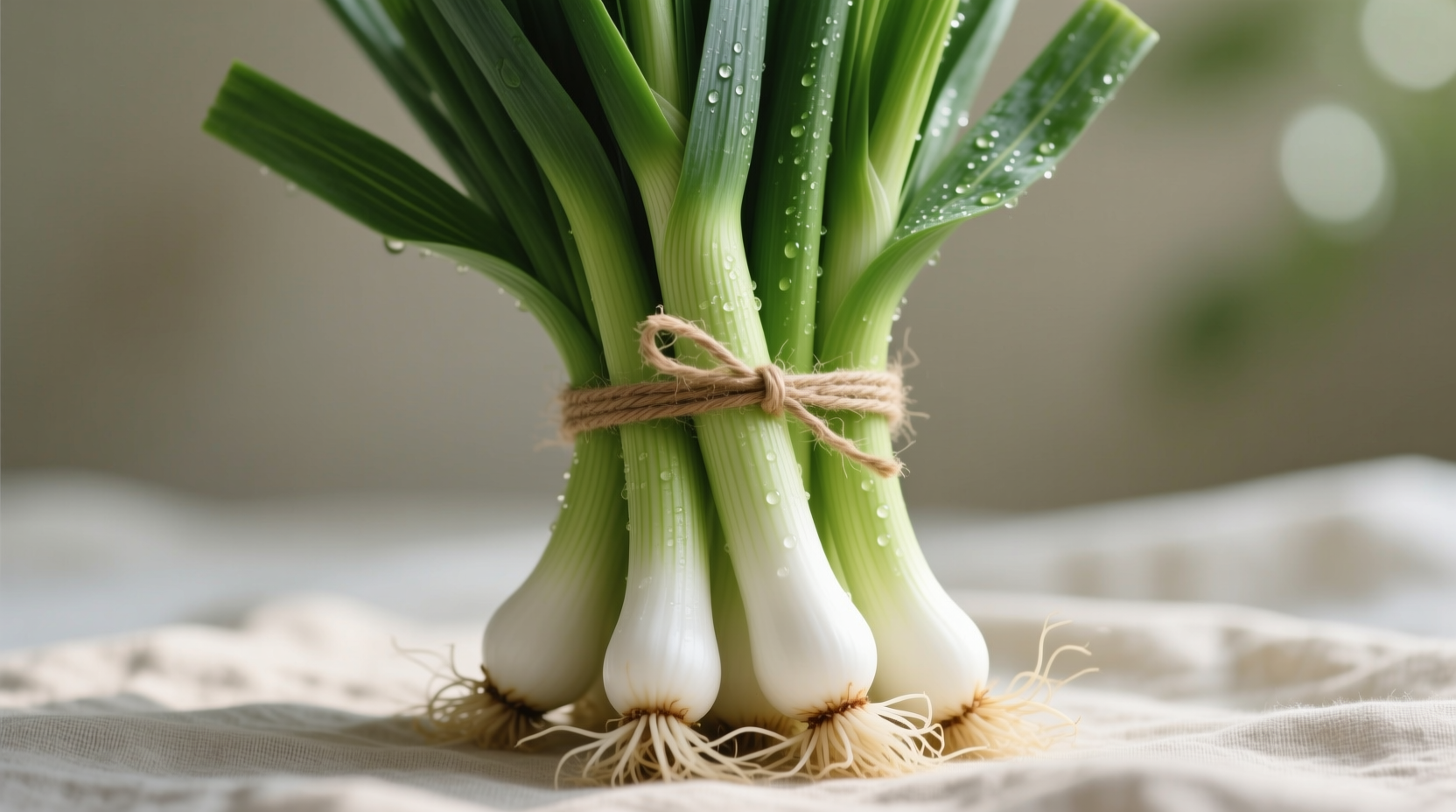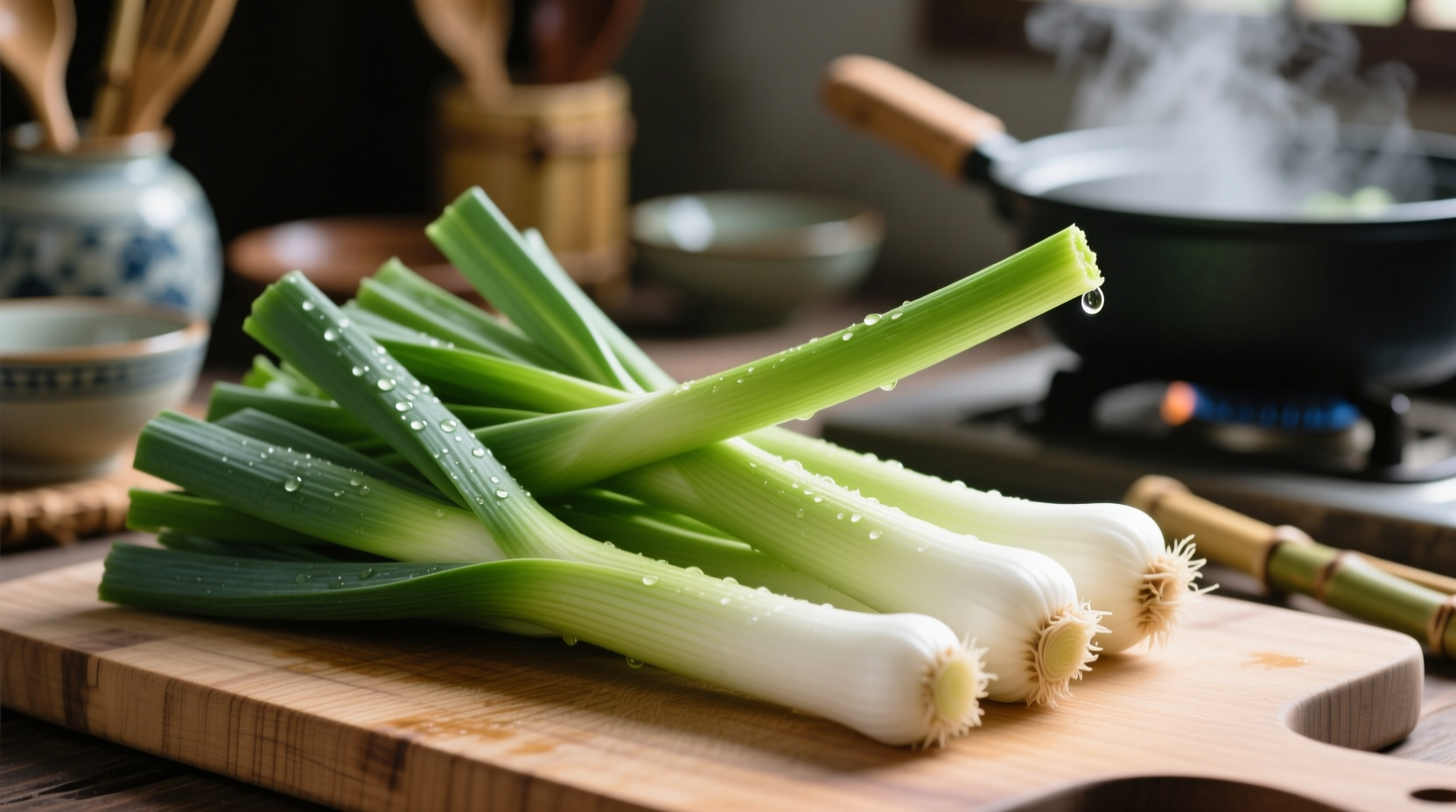Discover why Chinese leek has become a staple in kitchens worldwide while maintaining its cultural significance in traditional Chinese cooking. This comprehensive guide reveals everything you need to know about identifying, selecting, preparing, and maximizing the culinary potential of this unique allium variety.
What Exactly Is Chinese Leek?
Chinese leek (Allium tuberosum), often mistakenly called garlic chives, is a perennial plant native to Asia that belongs to the Amaryllidaceae family. Unlike its Western counterpart (Allium ampeloprasum), Chinese leek features flat, hollow leaves rather than cylindrical ones, with a distinctive garlic-onion hybrid flavor that intensifies when cooked. The plant produces attractive white flower clusters that are also edible and commonly used in Chinese cuisine.
Botanically classified as Allium tuberosum, this vegetable has been cultivated for over 3,000 years throughout China, Korea, and Southeast Asia. Its historical significance extends beyond culinary applications—traditional Chinese medicine has utilized Chinese leek for digestive health and circulation improvement for centuries.

Chinese Leek vs. Regular Leek: Key Differences
| Characteristic | Chinese Leek (Allium tuberosum) | Regular Leek (Allium ampeloprasum) |
|---|---|---|
| Leaf Shape | Flat, hollow | Rounded, solid |
| Flavor Profile | Mild garlic-onion hybrid | Sweet, onion-like |
| Edible Parts | Leaves, flowers, stems | White and light green portions |
| Culinary Use | Stir-fries, dumplings, pancakes | Soups, stews, roasts |
| Nutritional Highlight | Higher vitamin K and allicin | Higher vitamin A and folate |
Nutritional Powerhouse: Health Benefits
According to USDA National Nutrient Database analysis, Chinese leek delivers impressive nutritional value per 100g serving: 30% of daily vitamin K, 20% of vitamin C, and significant amounts of calcium and iron. The compound allicin, responsible for its distinctive aroma, provides antioxidant and anti-inflammatory properties that support cardiovascular health.
Research from the Journal of Agricultural and Food Chemistry confirms Chinese leek contains higher concentrations of organosulfur compounds than regular leeks, contributing to its potential health benefits including improved digestion and immune system support. These compounds remain stable through cooking, making Chinese leek valuable whether consumed raw or cooked.
Culinary Applications Across Asian Cuisine
Chinese leek's versatility shines in traditional dishes where its unique flavor profile enhances rather than overwhelms. In Chinese cooking, it's essential for:
- Jianbing (Chinese crepes) – adds aromatic depth to the batter
- Guotie (potstickers) – provides fresh contrast to meat fillings
- Hong Kong style wontons – creates signature green flecks in wrappers
- Stir-fried with scrambled eggs – classic home cooking combination
Chef Liu Wei notes: "The timing of adding Chinese leek determines its flavor impact. For subtle aroma, add at the beginning of cooking. For vibrant color and fresh flavor, stir in during the last minute." This technique distinction separates authentic preparation from common mistakes made by home cooks.
Selection, Storage, and Preparation Tips
When selecting Chinese leek, look for vibrant green leaves without yellowing or wilting. The white base should feel firm and crisp. Avoid bunches with slimy texture or strong ammonia-like odors, which indicate spoilage.
Proper storage extends freshness significantly. Wrap in slightly damp paper towels and store in the refrigerator's crisper drawer for up to 7 days. For longer preservation, chop and freeze in airtight containers—though this method reduces texture quality, it maintains flavor for cooked applications.
Preparation requires special attention: rinse thoroughly between leaves to remove trapped soil, then cut into uniform pieces based on intended use. For stir-fries, 1-2 inch segments work best; for dumpling fillings, mince finely. Remember that Chinese leek cooks faster than regular leeks—typically just 1-2 minutes in high-heat applications.
Contextual Usage: When to Choose Chinese Leek
Understanding when Chinese leek enhances rather than detracts from dishes is crucial for authentic results. This ingredient shines in:
- Quick-cooked dishes where its delicate flavor won't be overwhelmed
- Recipes requiring visual contrast (its bright green color stands out)
- Dishes where garlic flavor is desired without raw garlic's intensity
It's less suitable for long-simmered soups or stews where its flavor dissipates, or in raw applications requiring stronger onion notes. When substituting for regular leeks, use 75% of the quantity since Chinese leek has more concentrated flavor.
Growing Chinese Leek at Home
For gardeners, Chinese leek proves remarkably adaptable. The USDA Agricultural Research Service confirms it thrives in USDA zones 3-10 with minimal care. Plant seeds 1/4 inch deep in well-draining soil with partial sun exposure. Water regularly but avoid over-saturation.
Harvesting begins when plants reach 6-8 inches tall—cut leaves 2 inches above soil level to encourage regrowth. The plant becomes more flavorful after experiencing light frost. Unlike regular leeks, Chinese leek requires less space and produces multiple harvests per growing season.
Common Mistakes to Avoid
Even experienced cooks make these errors with Chinese leek:
- Overcooking – destroys delicate flavor and turns leaves mushy
- Improper washing – soil trapped between flat leaves creates unpleasant texture
- Using the wrong part – unlike regular leeks, the entire Chinese leek is edible
- Substituting 1:1 – its stronger flavor requires less quantity than regular leeks
Preserving Authentic Flavor
To maximize Chinese leek's distinctive taste, professional chefs recommend these techniques:
- Add to dishes during the final minute of cooking for maximum flavor retention
- Pair with complementary ingredients like sesame oil and soy sauce
- Avoid acidic ingredients early in cooking, which diminish its aromatic compounds
- Use in combination with ginger to create complex flavor layers
When properly handled, Chinese leek transforms simple dishes into authentic culinary experiences that showcase the sophistication of Chinese cooking traditions.











 浙公网安备
33010002000092号
浙公网安备
33010002000092号 浙B2-20120091-4
浙B2-20120091-4